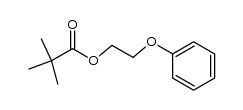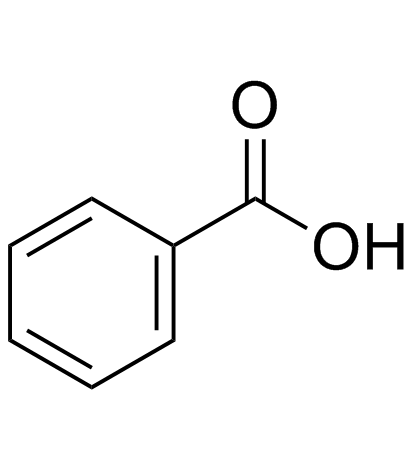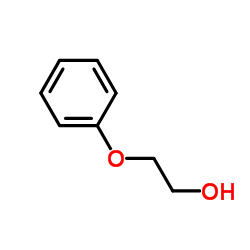128607-22-7
| Name | 2-[4-[(Z)-4-chloro-1,2-diphenylbut-1-enyl]phenoxy]ethanol |
|---|---|
| Synonyms |
2-(p-((Z)-4-Chloro-1,2-diphenyl-1-butenyl)phenoxy)ethanol
Ethanol, 2-[4-[(1Z)-4-chloro-1,2-diphenyl-1-buten-1-yl]phenoxy]- FC-1271a Z-2-(4-(4-chloro-1,2-diphenyl-but-1-enyl)phenoxy)ethanol UNII-B0P231ILBK Ophena Osphena 2-{4-[(1Z)-4-Chloro-1,2-diphenyl-1-buten-1-yl]phenoxy}ethanol Deamino-hydroxytoremifene ospemifene Fc-1271 |
| Description | Ospemifene is a selective estrogen for the prevention of postmenopausal osteoporosis with IC50 values of 827nM and 1633nM for ERα and ERβ, respectively. target: ERα and ERβIC50:827 and 1633 nm for ERα and -β, respectively[1] IN vitro: The estrogen-dependent MCF-7 human breast cancer cells were used as a model for studies on the effects of Ospemifene on breast cancer cells. The addition of the compound at concentrations of 0.1 nm to 10 μm did not cause a significant increase in MCF-7 cell growth in vitro when studied by measuring ATP or 3-[4,5-dimethylthiazol-2-yl]2,5-diphenyltetrazolium bromide levels, cell numbers, and rate of [3H]thymidine incorporation during a 7-day culture period. On the other hand, the compound did not inhibit the growth stimulation caused by 1 nm estradiol, except at a concentration 10 mm by only 30%. Similar results were obtained with ZR 75–1 cells, another estrogen-dependent human breast cancer cell line. The cytotoxicity of FC1271a at high concentrations was therefore markedly lower than that for TAM, TOR, or RAL.[1]In ER+ MCF-7 cells, TOR VI and FC-1271a exhibited anti-estrogenic activity. The anti-estrogenic effects of these compounds were less potent as anti-estrogens when compared with TOR and RAL.[2]"In vivo: In the DMBA rat mammary carcinoma model, Ospemifene showed a clear antitumor effect that seemed to be caused primarily by a decrease in the appearance of new tumors but also by a retardation of tumor progression without stimulating the growth of human breast cancer cells.[1]Tumor growth was shown to be inhibited at these doses, indicating anti-estrogenic activity at all doses including 50 and 100 mg/kg Ospemifene. By the end of treatment, MCF-7 tumors in Ospemifene treated mice were statistically smaller compared with control tumors.[2] |
|---|---|
| Related Catalog | |
| References |
| Density | 1.166±0.06 g/cm3 |
|---|---|
| Boiling Point | 544.6±50.0 °C at 760 mmHg |
| Molecular Formula | C24H23ClO2 |
| Molecular Weight | 378.891 |
| Flash Point | 283.2±30.1 °C |
| Exact Mass | 378.138672 |
| PSA | 29.46000 |
| LogP | 6.98 |
| Appearance | powder,white to beige |
| Vapour Pressure | 0.0±1.5 mmHg at 25°C |
| Index of Refraction | 1.608 |
| Storage condition | 2-8°C |
| Water Solubility | Insuluble (6.4E-3 g/L) (25 ºC) |
| Symbol |

GHS09 |
|---|---|
| Signal Word | Warning |
| Hazard Statements | H410 |
| Precautionary Statements | P273-P501 |
| Hazard Codes | N |
| Risk Phrases | 50/53 |
| Safety Phrases | 60-61 |
| RIDADR | UN 3077 9 / PGIII |
| WGK Germany | 3 |
| Precursor 9 | |
|---|---|
| DownStream 0 | |
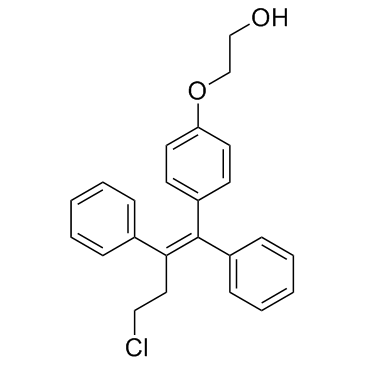

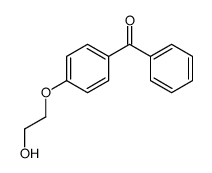
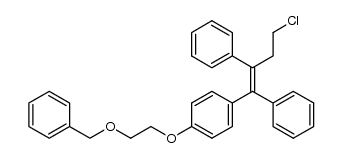
![Phenol, 4-[(1Z)-4-chloro-1,2-diphenyl-1-buten-1-yl] structure](https://image.chemsrc.com/caspic/412/89778-41-6.png)
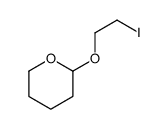
![(Z)-[4-(4-Chloro-1,2-diphenylbut-1-enyl]phenoxy)acetic Acid Ethyl Ester structure](https://image.chemsrc.com/caspic/078/341527-08-0.png)
